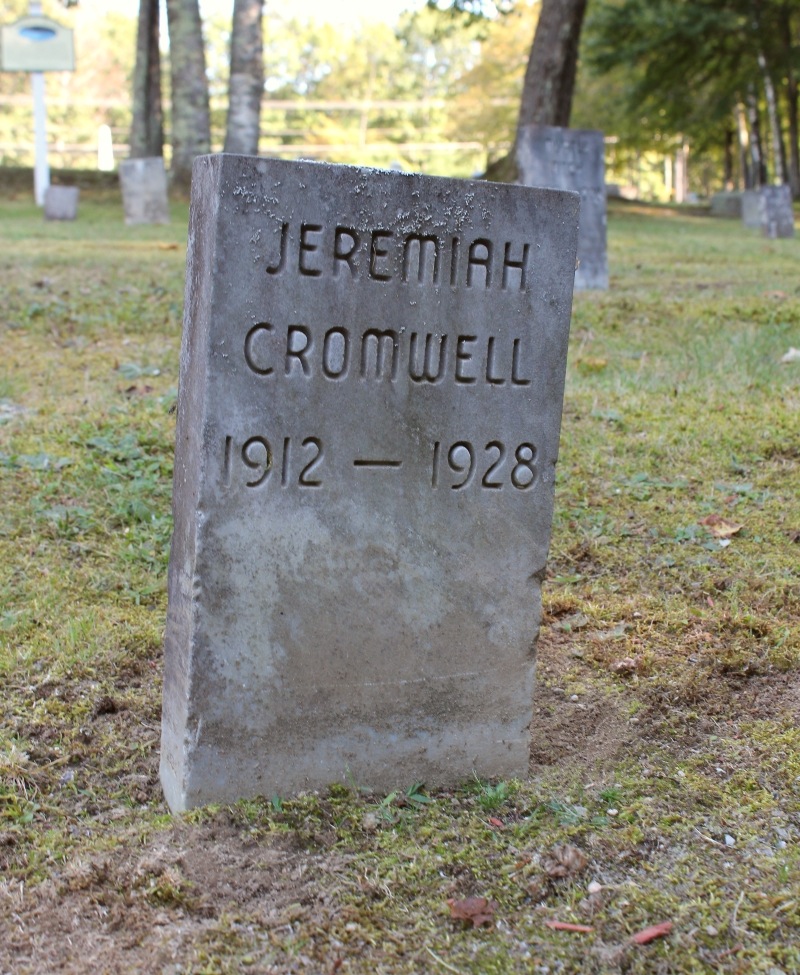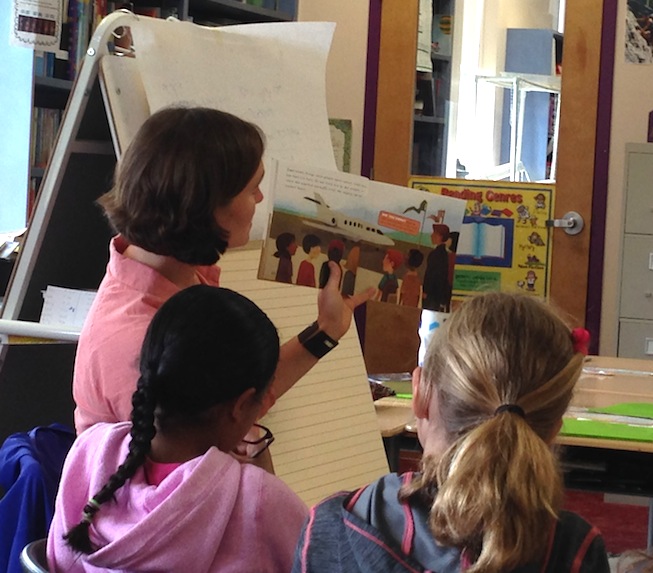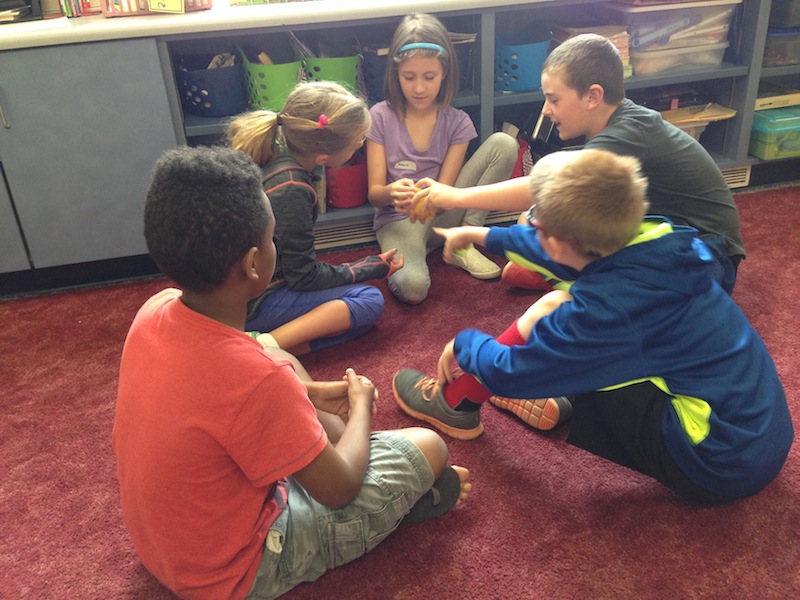For what seemed like an eternity, but was barely a minute, Shannon Grady’s third graders at Small School in South Portland had to pair up and stare at each other. There was a little a lot of fidgeting and giggling and glancing around.
More to staring than rudeness
Kelly Corbin, the adult in the pink shirt standing in the middle of the kids, asked how it felt — to be stared at and to stare at someone else.
When someone is staring at them?
- Weird
- Funny (uh oh, not ha ha)
- Awkward
- Creepy
When they’re doing the staring?
- Uncomfortable
- Tiring
- Fine
What if a stranger is staring at them?
- Weird
- Scared
- Uncomfortable
- Annoyed
- Couldn’t ignore
And what if they were in the grocery store and noticed a man with a twisted leg and crutches? Would they want to stare? Or at least steal a glance?
Yes.
The kids agreed that the man probably felt the same way they did about being stared at.
What would they do if the man caught them staring?
- Look away
- Smile
- Wave
- Say hi
How many times did we hear as kids or have told our own kids not to stare because it isn’t polite? With this simple exercise, these kids began to understand that’s it about more than being rude — it’s about understanding how awful it feels to be stared at. A lesson in empathy.
Changing attitudes
Kelly is one of a half dozen program leaders who travel to elementary schools throughout Maine, trying to “change attitudes” about people with disabilities.
They do so on behalf of The Cromwell Center for Disabilities Awareness, an organization that until the other night (I’ll explain shortly) I’d never even heard of. Teachers know about though.
As it states on the center’s website, since it was founded in 2004 by Jamie Kaplan and Irv Shapell, “over 53,000 students have heard our message that all differences are entitled to respect and that our similarities far outweigh our differences.”
The center bears the name of Jeremiah Cromwell, who died of appendicitis in 1928 at the age of 16. At the time, he was a resident of the Maine School for the Feeble Minded, which most Mainers know as Pineland.
No one claimed Jeremiah’s body and as the story goes, he was buried on school grounds, his grave “marked only by a small cement cylinder stamped with his patient ID number.”
Thirty years later, in the late 1950s, the cement cylinder was replaced with a gravestone bearing his name — Jeremiah Cromwell.
According to a press release issued when The Cromwell Center first opened, “The Center is dedicated to the mission that people with developmental and other disabilities will never again experience such profound isolation in life and anonymity at death.”
What does the word disability mean?
Back in Mrs. Grady’s classroom Kelly and the students talk about the word disability and what it means.
“It means you can’t do something — not because you never tried though.”
“It’s harder to do things.”
“You could be hurt and it can’t get fixed.”
“Maybe your legs don’t work.”
“You have trouble sounding out words.”
“Maybe you try to read letters and numbers and they move around and make no sense.”
“My aunt has a problem with her eyes. She’s almost blind, but she skied in the
“I know a little girl whose dad can’t hear. They speak in sign language.”
“A disability makes you feel different.”
When Kelly held up a book she was going to read aloud — My Friend Has Autism — one of the students got excited and exclaimed, “Autism is my disability!”
She explained to her classmates that sometimes she blurts things out. She can’t always help it. And sometimes she cries and gets angry.
Later, when Kelly asked what made each of them different from other people, the same student didn’t say autism, she said (proudly), “I’m double jointed!”
Similarities and differences
To help drive home the point about differences, Kelly divided the kids into small groups, gave each group a lemon and instructed them to “get to know it.”
Then she gathered them up (the lemons) and asked a representative of each group to identify which was theirs. No one hesitated.
“How did you know?” she asked. “They all look the same.”
“We had to figure out what made our lemon different,” answered a student.
At the end of her presentation, Kelly left the students with bookmarks, a letter to share with their families, and a poster and a book for their classroom.
Hopefully, she also left them with an understanding that everyone is different or unique — with or without a disability, everyone has things they can and cannot do, and everyone deserves respect.
100+ Women Who Care Southern Maine
In order to offer its programs and materials, The Cromwell Center has to rely on fundraising efforts. That’s how I found out about the work it’s doing.
I belong to a fabulous group of more than 160 (and growing) women called 100+ Women Who Care Southern Maine. Four times a year we meet and each of us donates $50 to a nonprofit organization in Maine. Members nominate the organizations and at each meeting three are chosen at random.
Representatives from the three organizations present their case and we vote for the one we want to receive our collective donations. At our last meeting, we chose The Cromwell Center. It will receive a check for around $6000. (Donations are still coming in.)
“I was thrilled when we were chosen,” says Executive Director Susan Greenwood. “For a small nonprofit, this amount of money makes a huge difference. We don’t get any government funding so each year we need to raise enough money through donations from foundations, individuals and special events to fund the programs. Even if we hadn’t been the final choice for the donations, it was wonderful to tell The Cromwell Center story to a group of interested, supportive and community-minded women.”
New members are always welcome. For more information, visit 100+ Women Who Care Southern Maine.
Cromwell Center Invitation
If you’d like to learn more about The Cromwell Center and the programs it offers, there’s lots of information on its website.
You’re also invited to attend the 2015 Cromwell Center Dinner and Auction on June 4th at the Marriott in South Portland. The Center will be honoring Travis Roy for his efforts in spinal cord injury research and awareness. Twenty years ago Travis was seriously injured in an ice hockey accident and went on to found the Travis Roy Foundation.
What she didn’t know
A final note about Kelly’s presentation at Small School. When Mrs. Grady asked her third graders if they’d like to share something they learned, one student said she was glad her classmate told them about her autism — that she didn’t know before. And from across the room, that classmate was smiling from ear to ear.
About the gravestone picture
I came upon the picture of Jeremiah Cromwell’s gravestone by chance when I was searching for Pineland pictures in general. I couldn’t believe it when I saw it. The picture was taken by photographer Ben Gross, who shares his work on Tumblr. You should check out his site — PicsbyBen. He does great work.






Leave A Comment